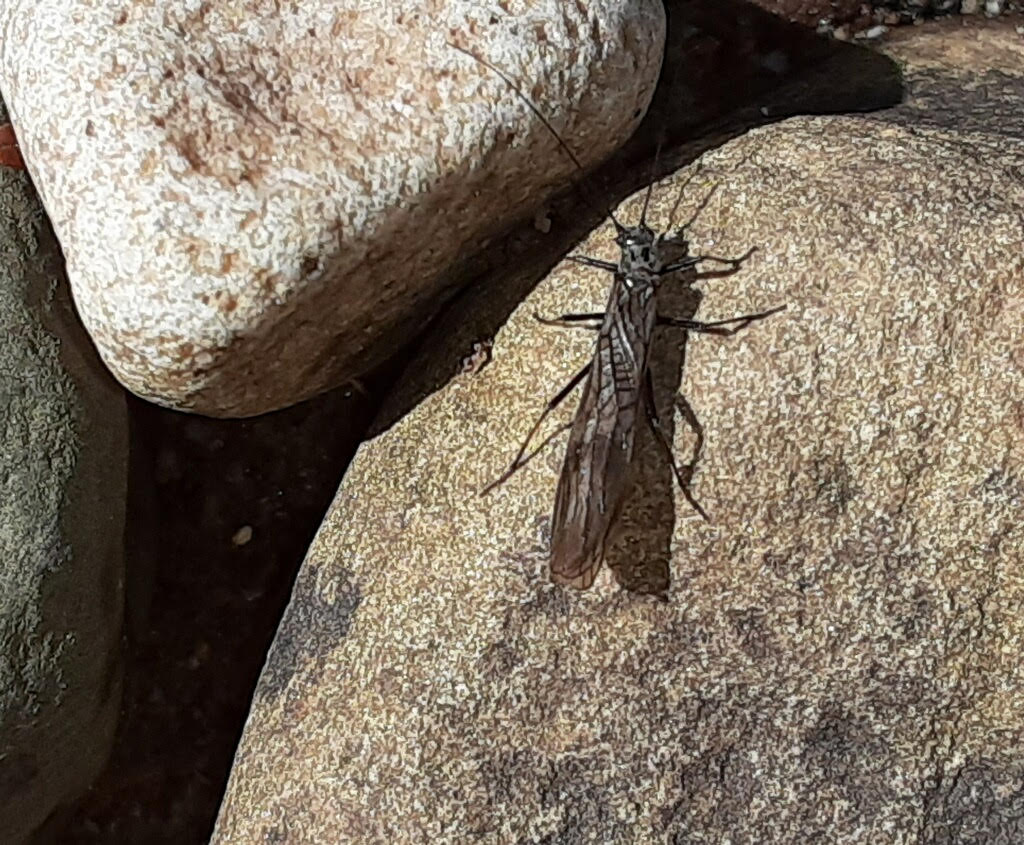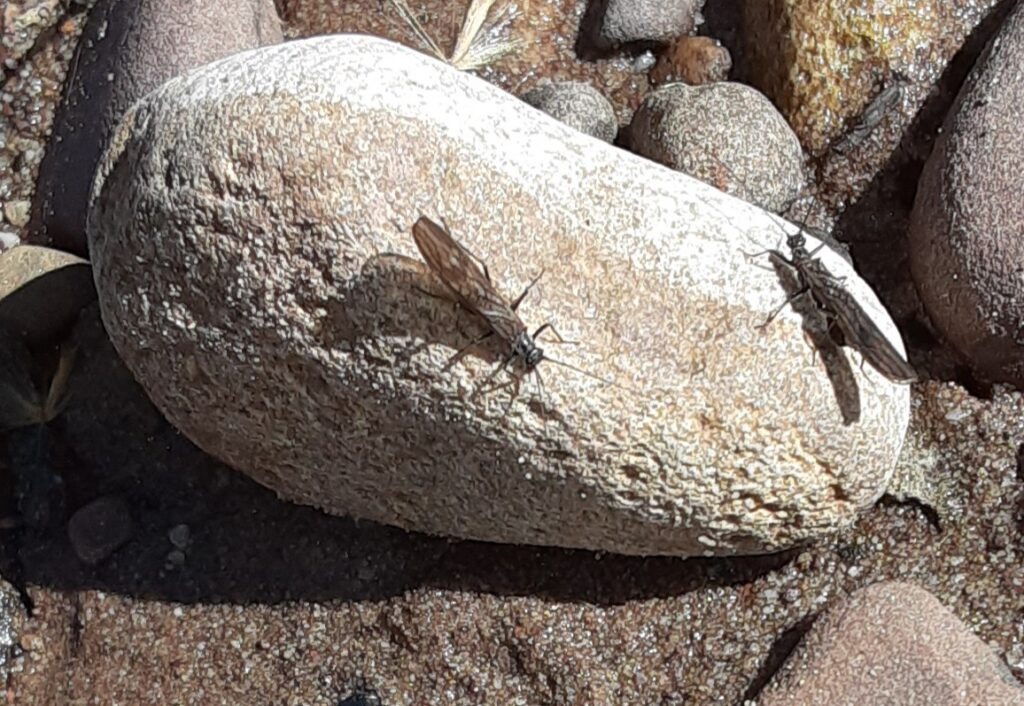By Susan Sprout
The sunny and bright-blue Thursday afternoon last week had me convinced – spring had sprung! Exploring creekside to see which plants were erupting from sand tucked around the beach rocks, I was amazed and delighted by an aerial bombardment of the riffles there. Yes! And I made all the appropriate vocalizations to go along with that surprising display – a downward “eeeerow” and an explosive “bsssh” when contact was made with the water’s surface! Hundreds of tiny female insects were diving, submerging, and letting go of yellowish egg sacs emerging from their backsides. Had to find out more about them.

I already knew about types of insects that live underwater because I have tied flies for fishing that mimicked various forms of “aquatic” insects. They live, eating and changing through their life stages, sometimes for several years, before they swim or crawl or fly out of the water all grown up and ready to mate. Obviously, the ones I saw had completed that last step and were seeding the creek with the next generation. For a while, I thought maybe the flights were a kamikaze-type with no survivors. Soon after, as I kept watching, the flying insects became swimming insects, landing on shore to sit on rocks in the sun. Were they resting before the next flight or had they completed their missions and would die there? Time for photos!

It turns out those ten to twenty millimeter long insects are (or were) members of the Leuctridae Family of Stoneflies. This family consists of over 390 species found on all continents of the Northern Hemisphere. So tiny! Their slender transparent wings didn’t just fold across each other down their backs to lie flat, but were cylindrical and appeared to wrap around the sides of their bodies. They are commonly known as Rolled-wing Stoneflies, also Needleflies or Willowflies. Adults develop in early spring unlike some other kinds of stoneflies that make their transitions later in the spring and summer. The adults I saw looked light-colored in the air as they flited toward the creek from their resting places on nearby tree branches. Once on the rocks, they appeared dark brown or black with their wing veins showing nicely.
I have never seen the yellow-colored larval forms of Rolled-wing Stoneflies. Illustrations show they are very thin for slithering between layers of leaves piled up underwater. They are considered “shredding detritivores” because they pull apart decaying leaves and gather nutrients that grow upon them, like fungus, algae, and bacteria. I have touched leaves submerged for long periods of time and found them covered with a slippery film. That must be what the larvae eat.
The adults are not very strong fliers according to some resources. I was able to snatch one out of the air as she flew by me. That was when I looked under her wings and discovered the egg sac on her backside!

